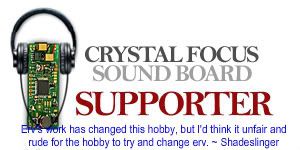Hi guys, I have started making the first few steps towards designing an Arduino based sound board and I have realised that I need some outside input.
I know there has already been a failed attempt at a community based sound board so I'm really determined to make this one work.
Basically I wanted to start a thread on what people want and look for in a sound board, just a basic what is needed and what things make a sound board user friendly.
Fist things first what sort of price line should I keep this board to? I am hoping to make this sound board as a cheap (Hasbro like) alternative. As a guide I'm hoping to spend under $50
Second should I include a LED driver or RGB LED color control? I know there is a lot of confusion in the community about how to create different blade colors and it wouldn't be very hard to include a feature like this with the aid of the Arduino. If I were to do something with RGB control would it be better to do manual color control (with a potentiometer) or do the color control with the Arduino (program based color change) or would people find that to difficult to navigate?
These sort of questions are the ones I'm hoping to find answers to with this thread.
If this threads a bit to deep for this forum or if its in conflict with store interests, also let me know. I don't want to start upsetting people.
Anyway, everybody's input is defiantly welcomed.
(edit)
Ok guys, I have a few new question for everyone.
How important is sound?
and
How loud dose the sound have to be?






 So what, I made a cancer stick
So what, I made a cancer stick 
 Reply With Quote
Reply With Quote













Bookmarks